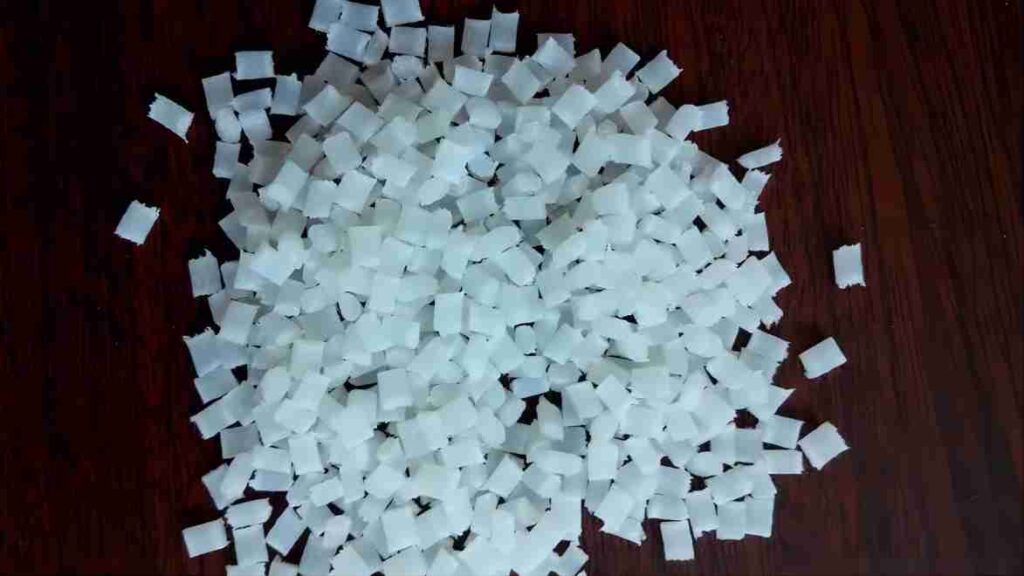Sparčiai vystantis automobilių pramonei, reikia medžiagų, galinčių pagerinti transporto priemonių eksploatacines savybes, ilgaamžiškumą ir saugumą. Viena iš pastaruoju metu didelio susidomėjimo sulaukusių medžiagų yra PA6 GF35. Šis pažangus polimeras suteikia daugybę privalumų automobilių pramonėje. Šiame straipsnyje nagrinėjama daugybė PA6 GF35 privalumų ir jo indėlis į transporto priemonių efektyvumą ir eksploatacines savybes.
Aukščiausio stiprumo ir standumo bei lengvo svorio privalumai
PA6 GF35, paprastai vadinamas Nailonas 66 sustiprintas 35% stiklo pluoštu, sujungia didelio stiprumo ir standumo bei lengvo profilio privalumus. Šis pusiau kristalinis termoplastikas puikiai tinka gaminant automobilių detales, kurios yra tvirtos, bet ne per sunkios, todėl pagerina transporto priemonės eksploatacines savybes nesumažindamos komponentų struktūrinio vientisumo.
Didesnis patvarumas prieš dėvėjimąsi ir nusidėvėjimą
Vienas iš išskirtinių PA6 GF35 privalumų - išskirtinis atsparumas dilimui. Iš šios medžiagos pagaminti automobilių komponentai, pavyzdžiui, krumpliaračiai, guoliai ir įvorės, kurie dažnai patiria trintį, puikiai veikia. Didelis atsparumas dilimui prailgina šių dalių tarnavimo laiką, todėl sumažėja techninės priežiūros poreikis ir ilgalaikės nuosavybės išlaidos.
Tvirtas atsparumas cheminėms medžiagoms sudėtingose aplinkose
PA6 GF35 yra labai atsparus įvairioms cheminėms medžiagoms, įskaitant rūgštis, šarmus ir tirpiklius. Dėl šios savybės jis idealiai tinka komponentams, veikiamiems atšiaurios aplinkos, pavyzdžiui, esantiems degalų ir aušinimo sistemose arba po variklio gaubtu. Atsparumas cheminėms medžiagoms padeda išlaikyti medžiagos vientisumą ir eksploatacines savybes laikui bėgant, net ir sudėtingomis sąlygomis.
Išskirtinės elektros izoliacijos savybės
PA6 GF35 elektros izoliacijos savybės leidžia jį puikiai naudoti automobilių elektros komponentams. Jo maža dielektrinė konstanta ir didelė tūrinė varža yra labai svarbios tokioms dalims kaip jungtys, jungikliai ir jutikliai, nes užtikrina veiksmingą izoliaciją ir minimalius signalo nuostolius, o tai labai svarbu patikimam transporto priemonių elektroninių sistemų veikimui.
Gamybos ir taikymo universalumas
Puikus PA6 GF35 apdirbamumas leidžia lengvai formuoti sudėtingas formas ir geometriją, todėl jis tinka įvairiems gamybos procesams, pavyzdžiui, įpurškimui, išspaudimui ir išpūtimui. Šis universalumas reiškia, kad jis gali būti naudojamas įvairiose automobilių pramonės srityse, todėl galima kurti detales, tiksliai pritaikytas konkretiems funkciniams reikalavimams.
Išvados: Ateities medžiaga automobilių dizainui
Apibendrinant galima teigti, kad PA6 GF35 yra aukštos kokybės polimeras, turintis daug privalumų automobilių pramonei. Jo stiprumo, standumo, lengvumo, atsparumo dilimui ir cheminėms medžiagoms derinys idealiai tinka daugeliui automobilių komponentų. Be to, jo elektrinės izoliacijos savybės ir paprastas gaminimas dar labiau padidina jo geidžiamumą. Tobulėjant automobilių sektoriui, jis gali tapti vis svarbesne medžiaga formuojant ateities transporto priemonių naujoves ir eksploatacines savybes.
DUK: PA6 GF35 panaudojimo automobilių pramonėje supratimas
1. Kas yra PA6 GF35?
PA6 GF35dar žinomas kaip nailonas 66 su stiklo pluošto armatūra 35%, yra aukštos kokybės pusiau kristalinis termoplastikas. Jame nailonas derinamas su stiklo pluoštu, kad pagerėtų jo mechaninės savybės, todėl jis yra pageidautina medžiaga reikliose srityse, pavyzdžiui, automobilių detalėse.
2. Kokie yra pagrindiniai PA6 GF35 naudojimo automobilių pramonėje privalumai?
Jis turi keletą privalumų automobilių pramonėje, įskaitant:
- Didelis stiprumas ir standumas: Stiklo pluošto armatūra užtikrina puikias mechanines savybes, todėl komponentai yra tvirti, bet lengvi.
- Atsparumas dėvėjimuisi ir dilimui: Idealiai tinka trinties veikiamoms dalims, pavyzdžiui, krumpliaračiams ir guoliams, ir prailgina jų tarnavimo laiką.
- Atsparumas cheminėms medžiagoms: Jis atsparus aštrių cheminių medžiagų, naudojamų automobilių aplinkoje, poveikiui, todėl išlieka patvarus.
- Elektros izoliacija: pasižymi puikiomis izoliacinėmis savybėmis, kurios labai svarbios elektroniniams komponentams.
- Perdirbimo galimybės: Lengvai formuojamos sudėtingos formos, tinkamos įvairiems gamybos būdams.
3. Kaip PA6 GF35 stiprumo ir svorio santykis naudingas automobilių pramonei?
Dėl didelio PA6-GF35 stiprumo ir svorio santykio galima gaminti stiprius, bet nesunkius komponentus. Tai ypač naudinga automobilių pramonėje, kur sumažinus transporto priemonės svorį galima padidinti degalų naudojimo efektyvumą ir eksploatacines savybes, nesumažinant saugumo ar patvarumo.
4. Kodėl trinties veikiamiems komponentams pirmenybė teikiama PA6 GF35?
Dėl didelio PA6-GF35 atsparumo dilimui jis idealiai tinka detalėms, kurios dažnai liečiasi arba juda, pavyzdžiui, krumpliaračiams, įvorėms ir guoliams. Ši savybė mažina dėvėjimąsi, pailgina komponentų tarnavimo laiką, sumažina techninės priežiūros ir keitimo poreikį, todėl sutaupoma lėšų.
5. Ar PA6 GF35 gali atlaikyti atšiaurią cheminę aplinką?
Taip, jis labai atsparus cheminėms medžiagoms, todėl gali būti veikiamas įvairių cheminių medžiagų, įskaitant rūgštis, šarmus ir tirpiklius. Dėl to jis tinka naudoti degalų sistemų, aušinimo sistemų ir kitų cheminių medžiagų veikiamų sričių komponentuose.
6. Kaip PA6 GF35 prisideda prie automobilių sistemų elektrinių charakteristikų?
Jis pasižymi puikiomis elektros izoliacijos savybėmis. Dėl mažos dielektrinės konstantos ir didelės tūrinės varžos užtikrinama veiksminga izoliacija ir minimalūs signalo nuostoliai, o tai labai svarbu tinkamam elektroninių komponentų, pavyzdžiui, jungčių, jungiklių ir jutiklių, veikimui.
7. Kokie gamybos procesai suderinami su PA6 GF35?
Jis labai universalus ir suderinamas su įvairiais gamybos procesais, pvz:
- Įpurškiamasis liejimas: Skirta sudėtingoms ir tikslioms formoms gaminti.
- Ekstruzijos: Naudinga kurti ilgas, ištisines figūras.
- Pūstas liejimas: Tinka tuščiavidurėms dalims, pavyzdžiui, konteineriams ir ortakiams.
Dėl šio gamybos lankstumo PA6 GF35 yra tinkama medžiaga įvairioms automobilių pramonės reikmėms.
8. Ar yra kokių nors specifinių automobilių dalių, dažniausiai gaminamų iš PA6 GF35?
Iš PA6 GF35 gaminamos įprastos automobilių dalys:
- Variklio dangčiai: Dėl didelio stiprumo ir atsparumo cheminėms medžiagoms.
- Transmisijos komponentai: Dėl ilgaamžiškumo ir atsparumo dilimui.
- Elektros jungtys ir korpusai: Naudojamos jo elektros izoliacijos savybės.
- Pakabos sistemos komponentai: Pasinaudokite jo standumu ir matmenų stabilumu.
9. Kaip PA6 GF35 padeda taupyti transporto priemonių techninės priežiūros išlaidas?
Jo ilgaamžiškumas ir atsparumas dilimui bei cheminėms medžiagoms sumažina dalių keitimo ir techninės priežiūros dažnumą. Toks ilgaamžiškumas reiškia, kad transporto priemonės savininkai patiria mažesnes eksploatacines išlaidas per visą transporto priemonės eksploatavimo laikotarpį.
10. Kokios ateities tendencijos gali padidinti PA6 GF35 naudojimą automobilių pramonėje?
Kadangi automobilių pramonėje ir toliau ieškoma lengvų, patvarių ir ekonomiškų medžiagų, kurios atitiktų šiuolaikinių transporto priemonių reikalavimus, tikėtina, kad PA6-GF35 bus naudojamas vis plačiau. Jo mechaninio stiprumo, atsparumo cheminėms medžiagoms ir apdirbamumo derinys yra tinkamas elektromobilių, autonominių sistemų ir kitų pažangių automobilių technologijų inovacijoms.

